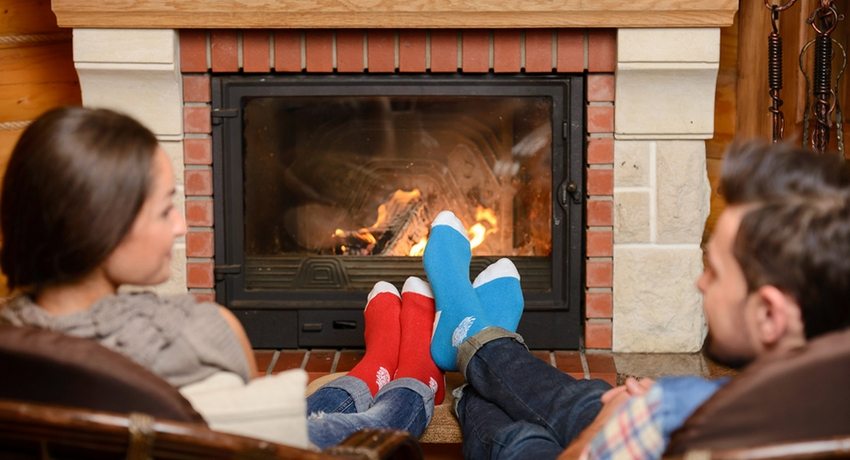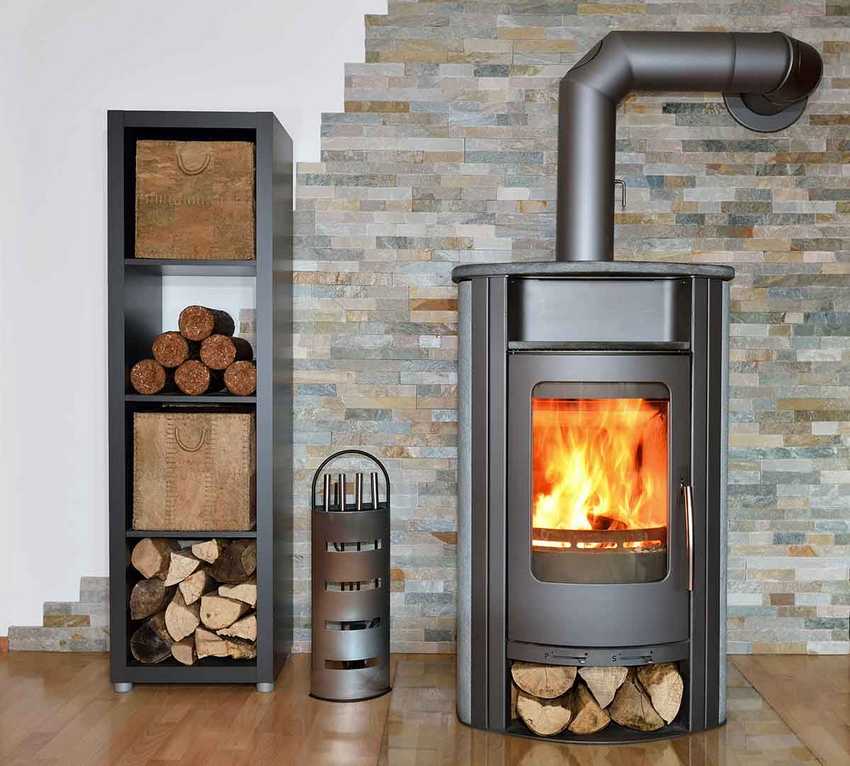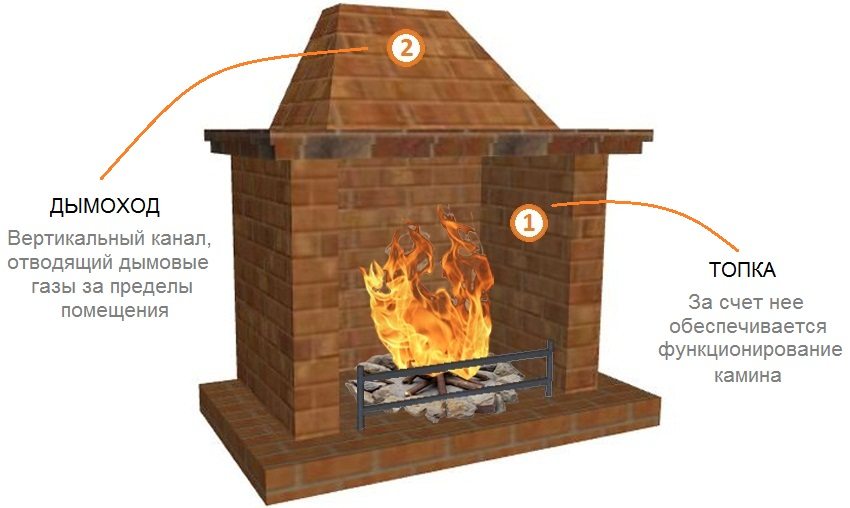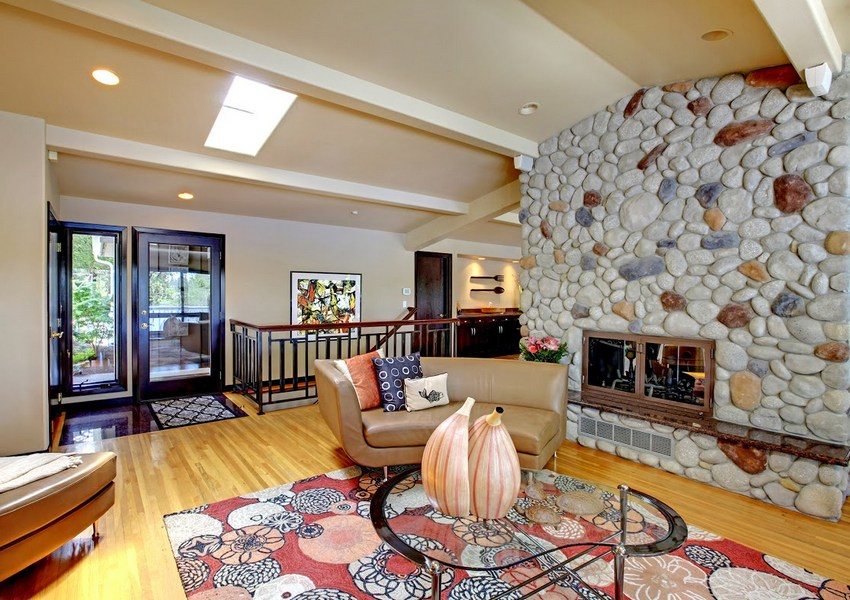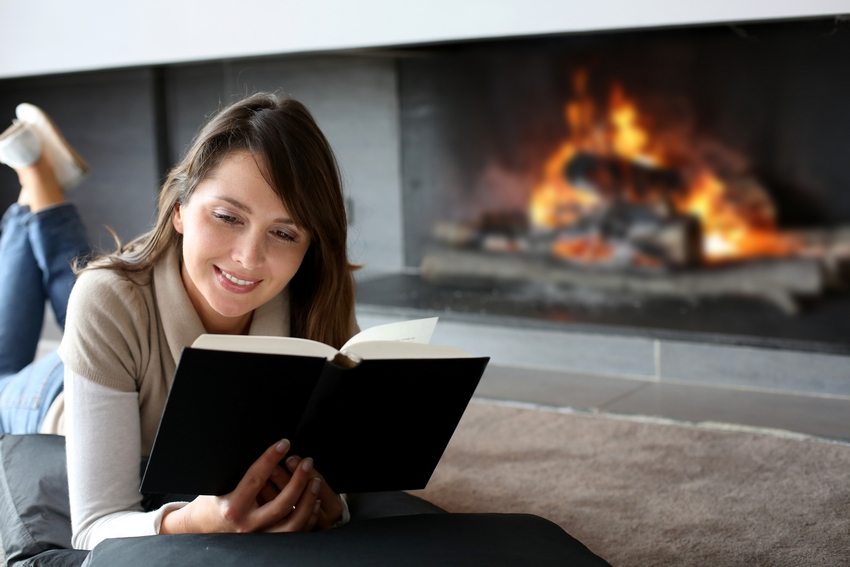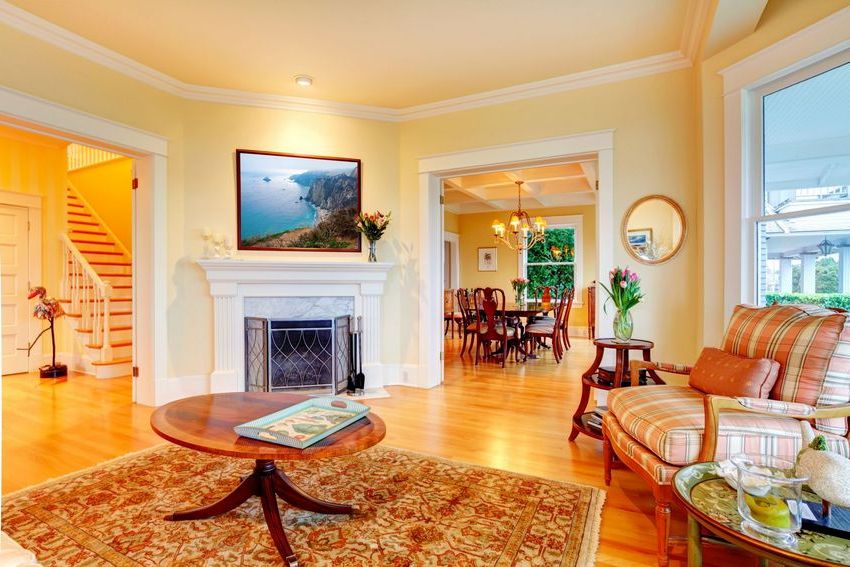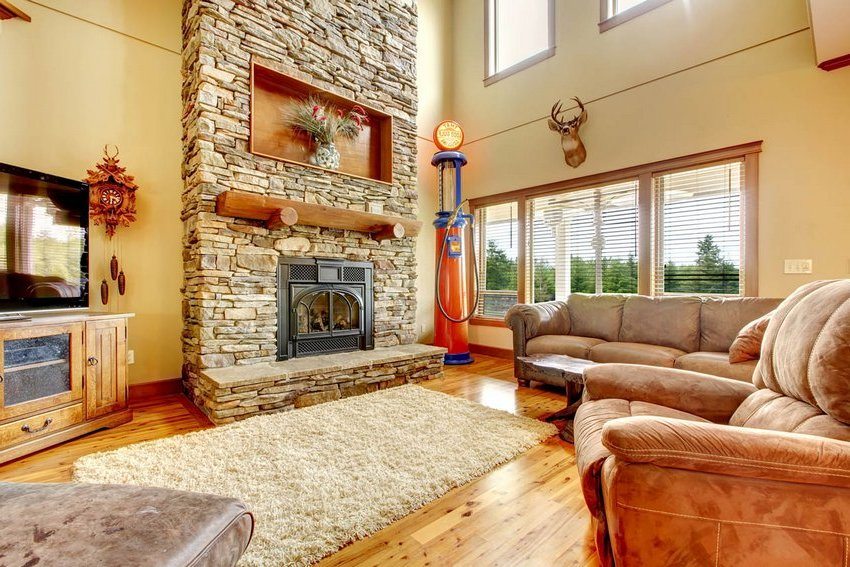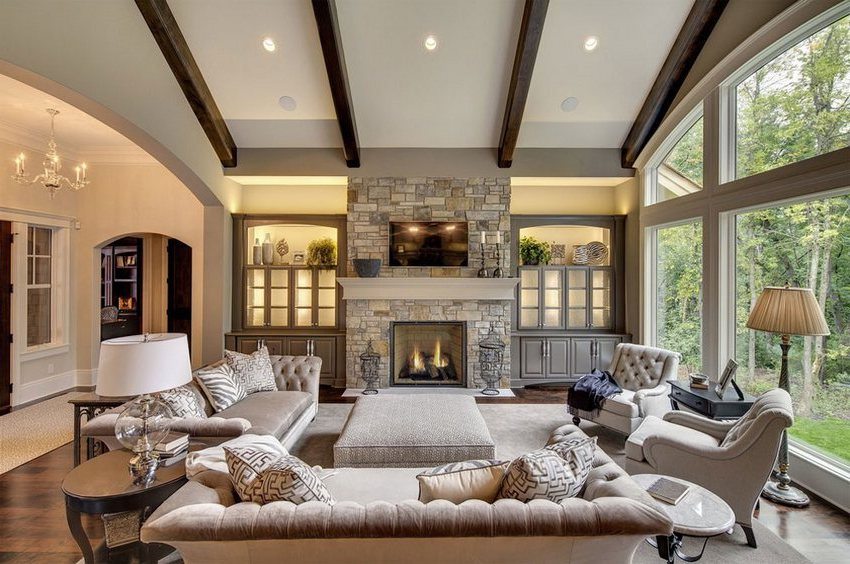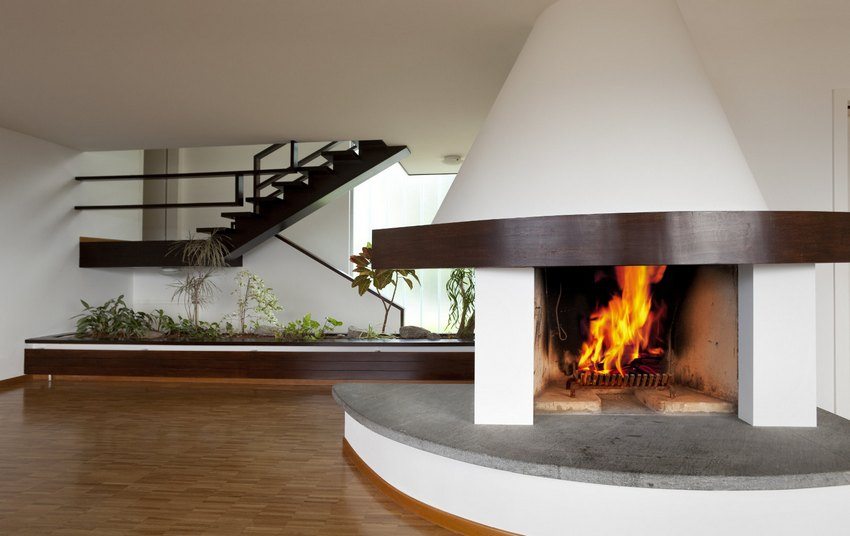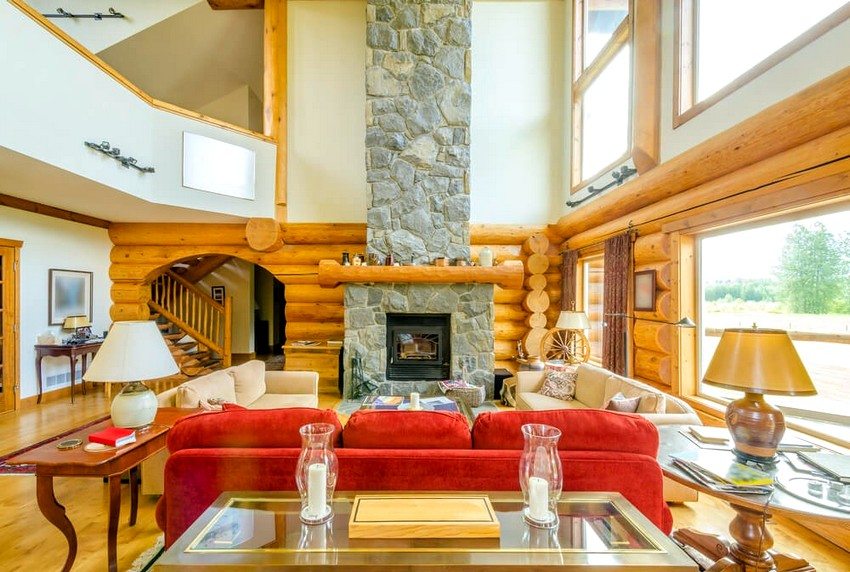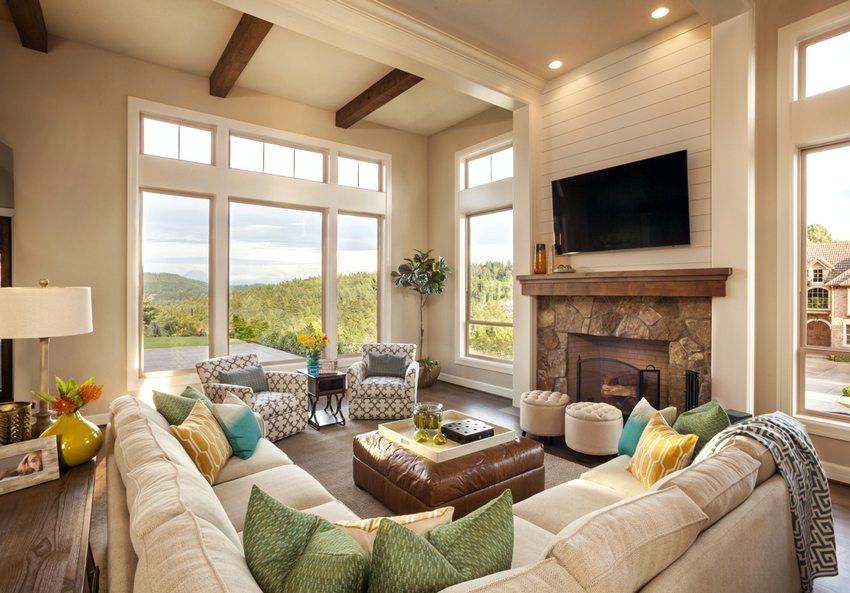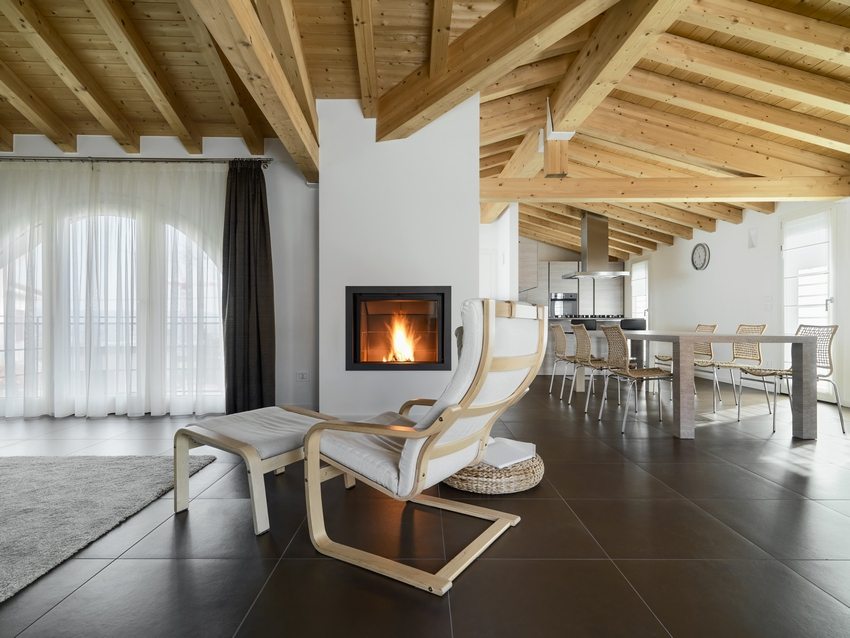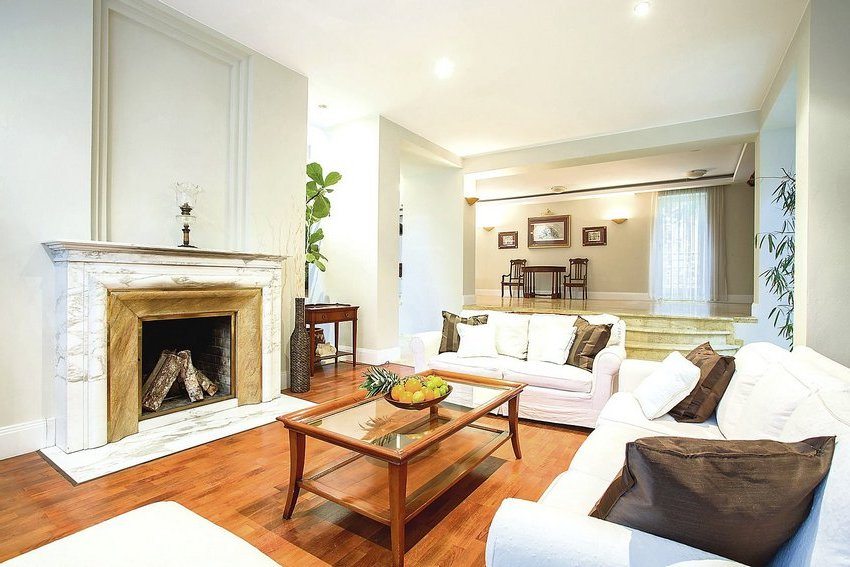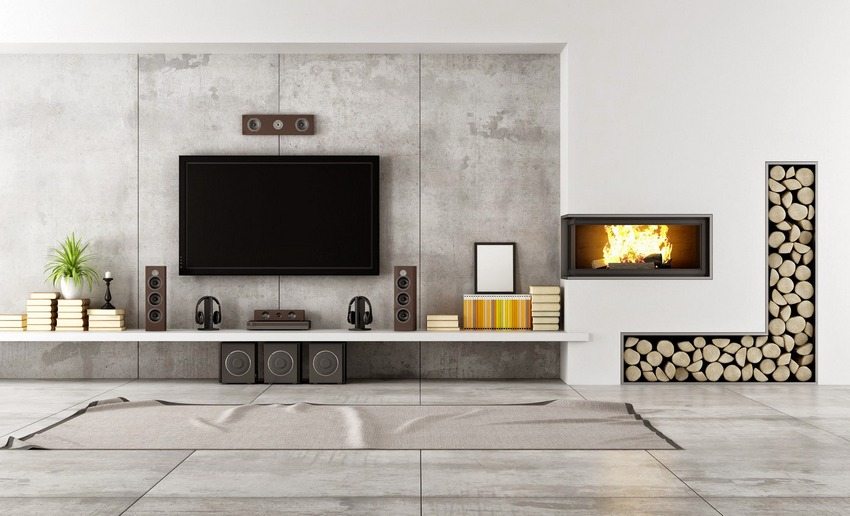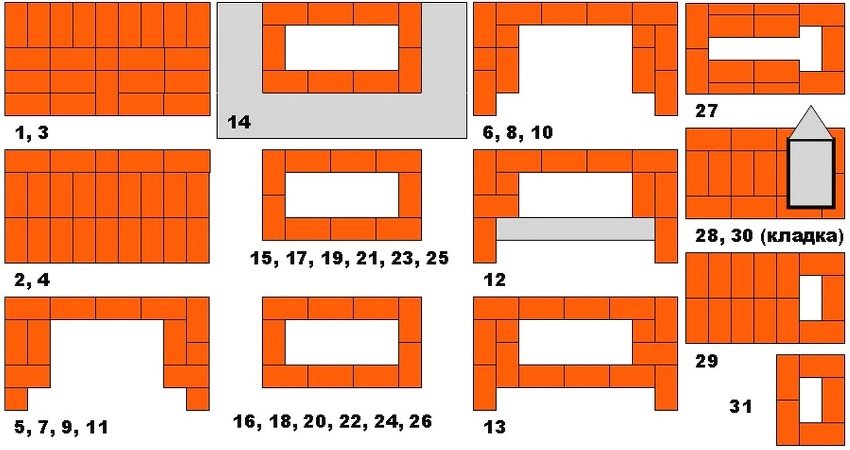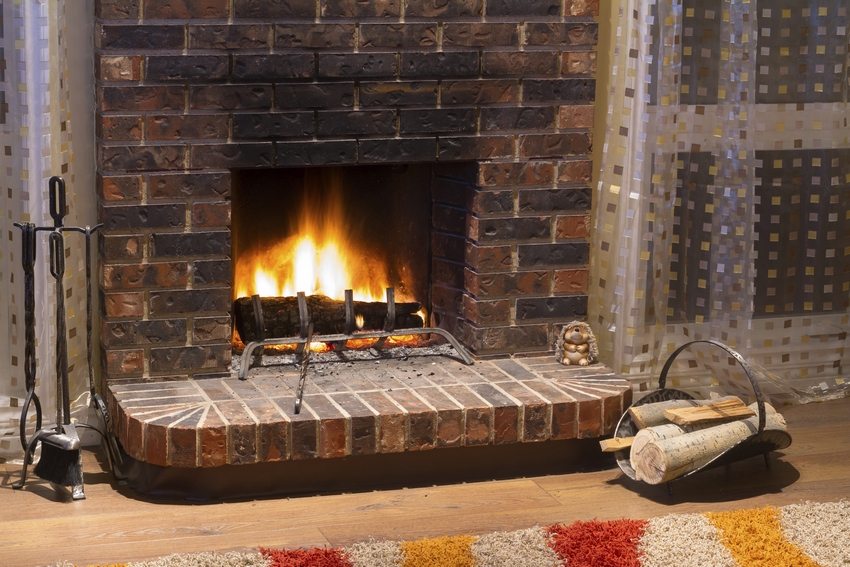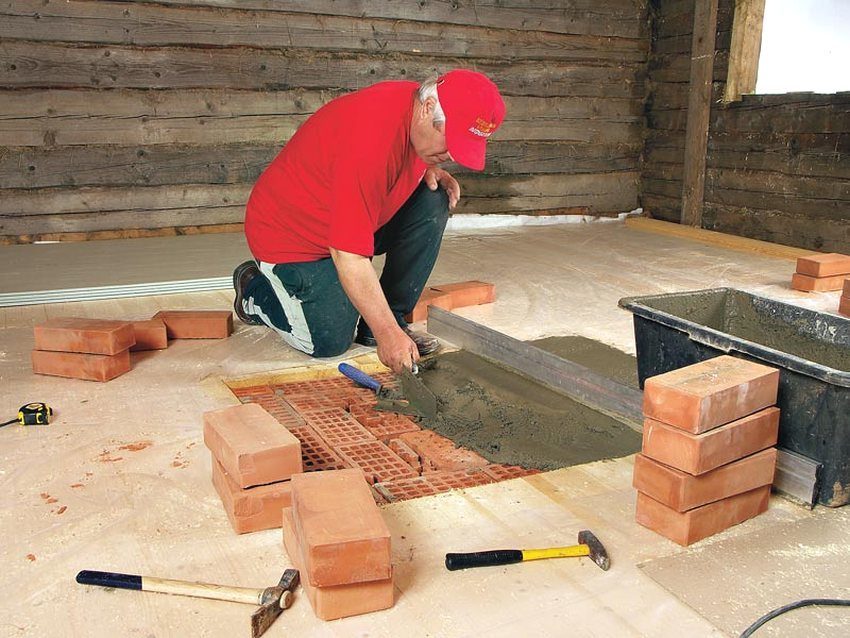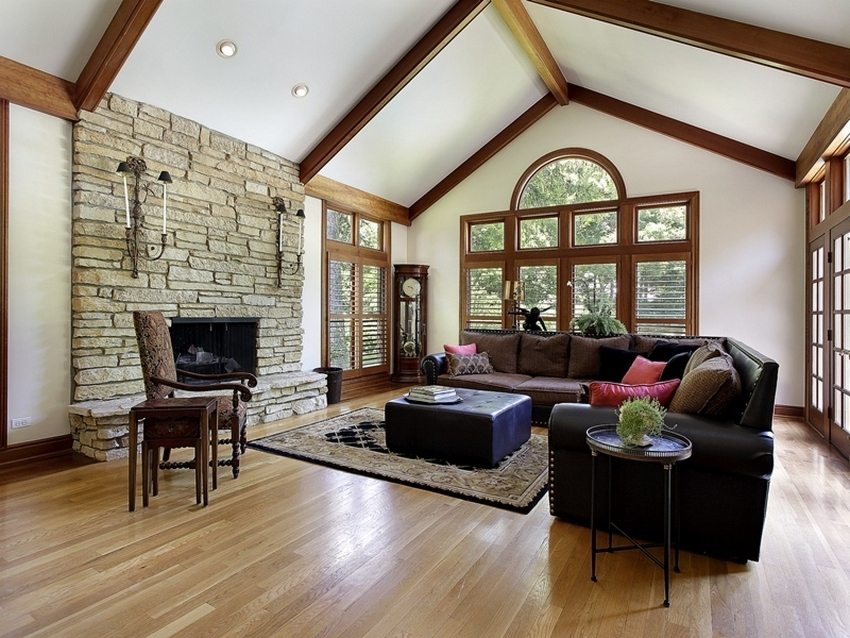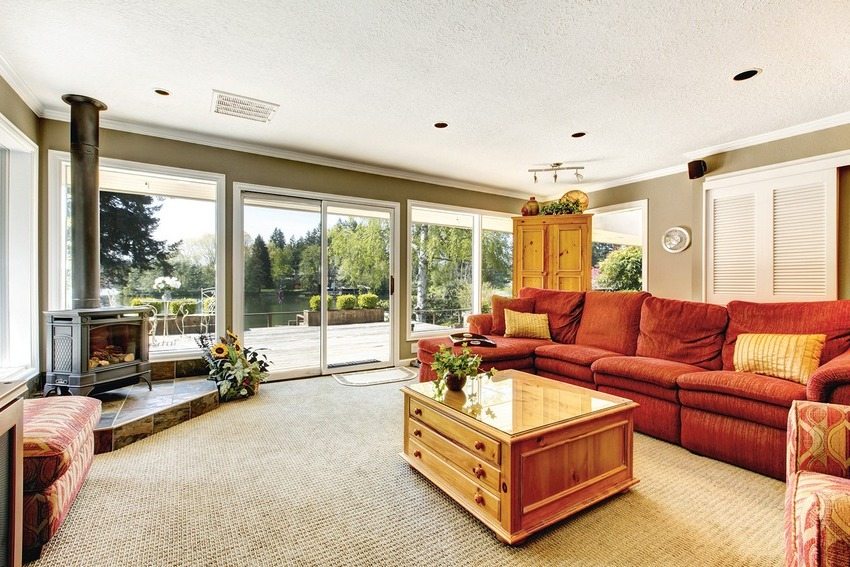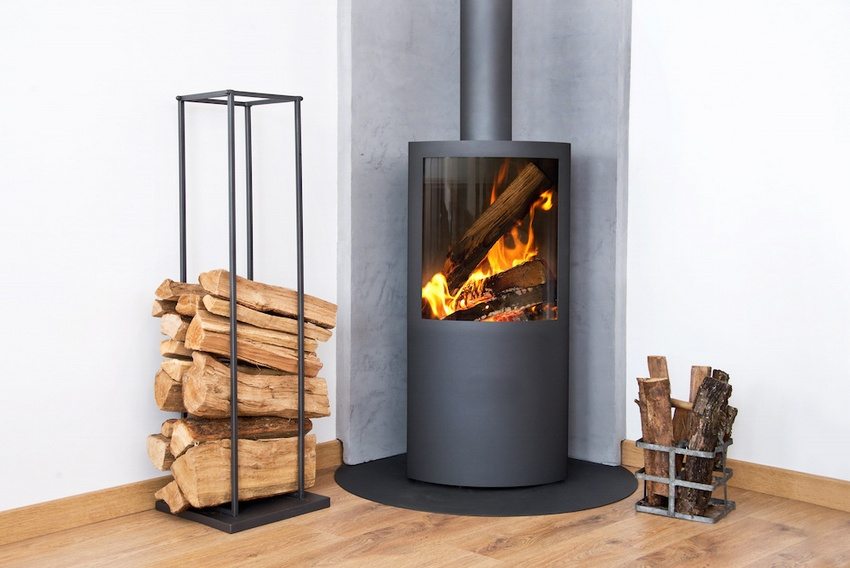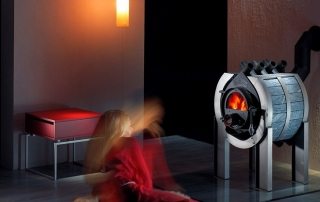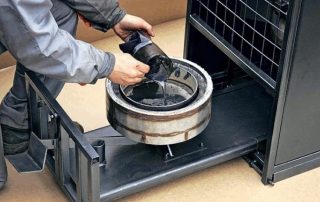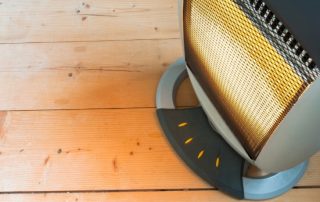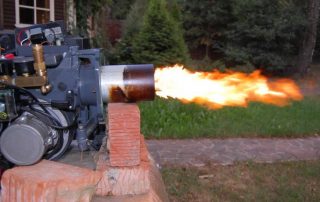More recently, it seemed that fireplaces were a thing of the past. They stayed only in the homes of wealthy people or met in the pages of design magazines, which described foreign interiors. However, the situation gradually changed, and gas, electric or wood-burning fireplaces for homes returned to country cottages and even to the apartments of ordinary citizens.
Content [Hide]
- 1 Wood burning fireplaces for home: design features
- 2 The main types of fireplaces for a country house, their pros and cons
- 3 Different styles of fireplaces in the living room interior: photo examples and best ideas
- 4 How to make a fireplace with your own hands: step-by-step instructions and useful tips
- 5 Advantages of wood-burning fireplaces for giving long burning
Wood burning fireplaces for home: design features
Due to some of its features, wood-burning fireplaces were able to register only in private, most often suburban, households. This is primarily due to the fuel used in wood burning fireplaces. Its use in an apartment is impossible due to non-compliance with fire safety requirements. Plus, too much space is needed to store the logs. But in a private house, especially a country house, a wood-burning fireplace will help create a unique atmosphere of home comfort, will become an additional source of heat and even a hearth for cooking.
A fireplace is essentially a stove with a straight chimney and an open firebox. The firebox and chimney are the main parts of any fireplace. It is in the firebox that the fuel is burned (in this case, firewood and coal for kindling), which ensures the functioning of the entire heater. The chimney in the form of a vertical pipe not only removes combustion products outside, but is also responsible for the draft.
In addition to these mandatory parts, other elements may be present in the design of the fireplace:
- smoke collector (a special chamber above the open firebox, which is responsible for the smooth exhaust of gases into the pipe);
- portal (the front decorative part of the fireplace, which, depending on the style, can have a different, for example, U-shaped or D-shaped, shape);
- cast-iron grate on which logs are stacked;
- ash pan designed to collect ash;
- a smoke tooth, located on the back wall of the fireplace and protecting the home from the penetration of smoke, as well as cold air from outside.
Modern wood-burning fireplaces for a summer residence and a country house are made not only of stone and brick, but also of metal, for example, cast iron. The design of a wood-burning cast-iron fireplace for a home is somewhat different from that described above.In it, in addition to the firebox (in this case it is made industrially from cast iron) and the chimney, there are:
- portal made of fire-resistant material (metal, brick or marble);
- radiator;
- doors (they are often made of special fire-resistant glass, on which soot and fumes do not settle).
It is interesting! As a rule, fireplaces are only an auxiliary source of heat due to their very low efficiency - only 5-20%. However, individual cast-iron fireplaces may well independently heat a small house, because their efficiency reaches 70-80%.
A big plus of cast iron fireplaces is their resistance to temperature extremes, due to which they do not lend themselves to deformation.
In specialized stores, there is a large selection of fireplaces for every taste and budget. In order not to get confused in all this variety, it is worth familiarizing yourself with their main types.
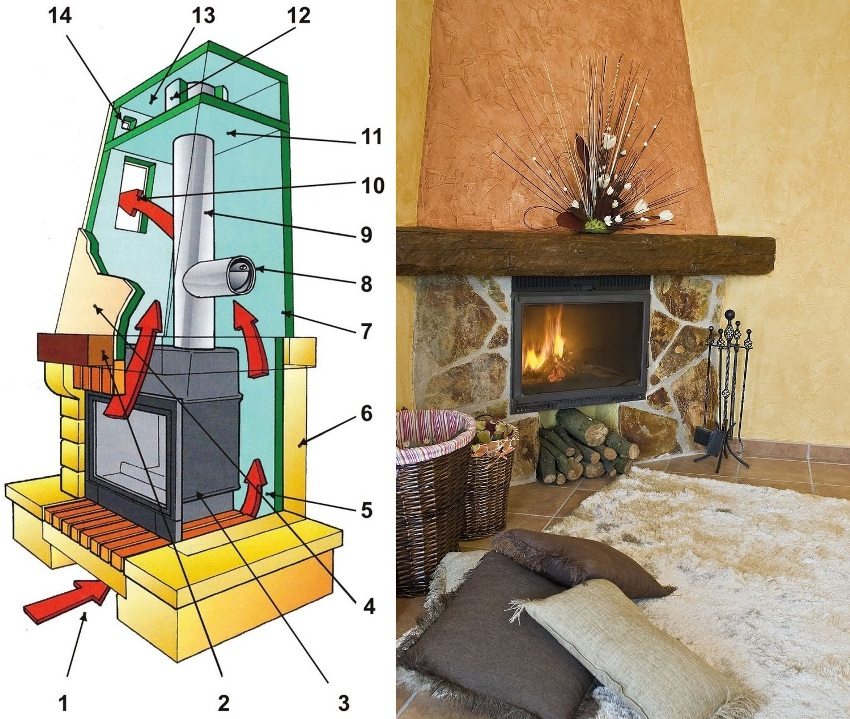
The device of a modern fireplace: 1 - air intake; 2 - fireplace portal; 3 - fireplace insert; 4 - thermally insulated shirt; 5 - air circulation in the jacket; 6 - facing the fireplace; 7 - wall thermal insulation; 8 - draft regulator (gate); 9 - chimney; 10 - air outlet; 11 - thermal insulation of the floor; 12 - chimney thermal insulation; 13 - heat chamber; 14 - decompression hole
The main types of fireplaces for a country house, their pros and cons
Depending on the design features, there are closed, semi-open and open fireplaces.
Closed (English) fireplaces
The recessed firebox of such fireplaces and the chimney are built into the outer or inner wall of the building. Therefore, they are also called built-in. The main advantage of closed fireplaces is their compact size, which allows them to be installed even in small rooms.
However, the arrangement of such a fireplace should be provided for by the project at the stage building planningas it requires sufficient wall thickness. In addition, such a fireplace significantly reduces the strength of the building wall, which must also be taken into account during construction.
Helpful advice! If the thickness of the walls does not allow the fireplace to be built in completely, it can also be placed in the interior wall. This will allow you to at least slightly reduce the area it occupies. In this case, the rear wall of the fireplace will be located in an adjacent room. It can be hidden behind a false wall, and a fireplace will heat two rooms.
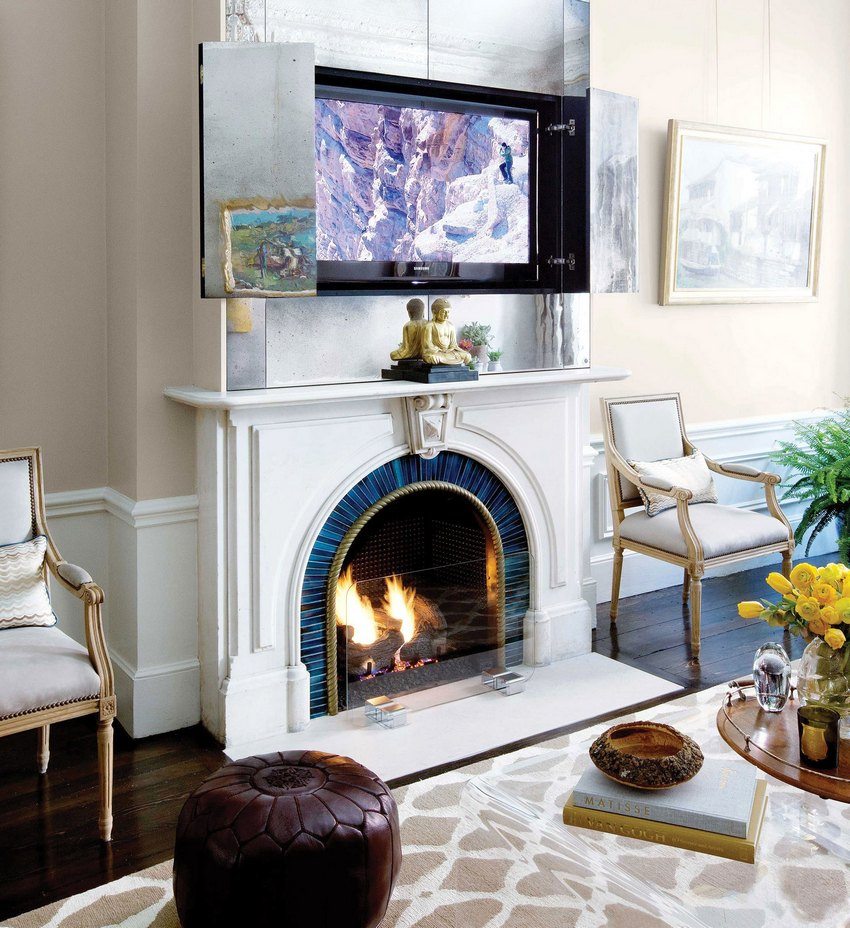
The arrangement of an English fireplace should be provided for by the project even at the planning stage of the building
Semi-open or attached fireplaces
Such a fireplace is not related to the structure of the wall. It is attached to it, leaving one or two side walls of the firebox open. Its efficiency is less than that of the previous type, but due to the design feature, it distributes heat over a large area. The most common are semi-open corner and wall-mounted fireplaces.
Related article:
Wood-burning stoves for summer cottages: a variety of designs. Classification, purpose and features of furnaces. Recommendations for choosing a product, types of installation. Advantages and disadvantages of ovens, their types.
Wood-burning corner fireplaces for the home allow you to competently use the empty space in the corners of the room and additionally heat adjacent rooms. A wood-burning corner fireplace can be installed on an external corner (this is suitable for spacious rooms with a non-standard layout). In this case, the fireplace will sort of diverge in two directions.
In the second case, a corner fireplace (photos on the Internet, as a rule, illustrate this particular option) is installed in the usual inner corner of the room. Such a fireplace visually connects the walls diagonally and takes up very little space, which makes it indispensable in small spaces. Shelves are often attached to it on the sides or even recesses in which seating is equipped.
Wall-mounted fireplaces are considered the most traditional. A more common option is when the fireplace is attached to the wall with the back side. This is due to the versatility of the model, because it is ideal for both spacious and small spaces. Such a fireplace can have the same dimensions along its entire height, or it can taper upwards and have protrusions.
A less common option is when the end of the fireplace is attached to the wall. This design divides the space into functional areas. As a rule, it is equipped with a metal through or closed firebox.
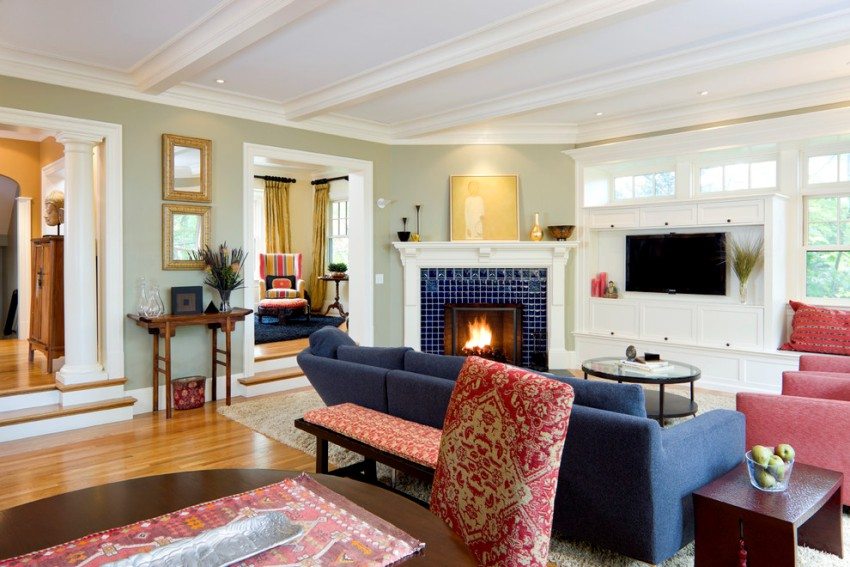
A corner fireplace with wood allows you to use the space wisely and contributes to additional heating of adjacent rooms
Open or island fireplaces
Open fireplaces do not touch the walls in the room, and their firebox is open from all sides. A variety of materials are used for their manufacture. It can be a ready-made metal fireplace or a brick fireplace (photos on the Internet demonstrate both options). An open fireplace is located on light supports or a suspended structure in the middle of the room. Due to its originality, such a heating device often becomes the main design element.
However, it also has certain, very significant, disadvantages. An open fireplace is suitable only for large rooms with high ceilings, it is extremely fire hazardous, and the weight of the suspended structure places high demands on the strength of the fasteners. In addition, it has the lowest efficiency and is not able to warm up the room even a meter away from itself.
Different styles of fireplaces in the living room interior: photo examples and best ideas
The most common of all types is the classic fireplace. As a rule, it is built into the wall, and its portal is U-shaped. Differs in simple and clear lines, symmetry, can be decorated with bas-reliefs, false columns or ornaments. Often such a fireplace is equipped with a mantelpiece, on which vases, candlesticks, figurines, photographs are usually placed. For its decoration, marble, granite, natural stone are used, and forged lattices are used as additional decorations.
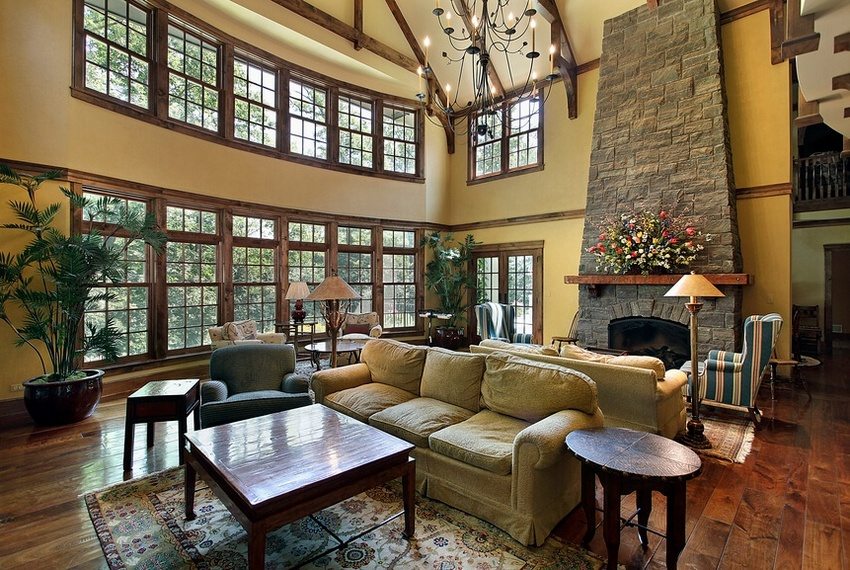
The fireplace harmoniously complements the interior of the living room, decorated in a classic style
Numerous photos of living rooms with a classic-style fireplace show how important it is that the interior of the room matches such a fireplace. The room should be decorated in restrained, harmoniously selected colors and complemented with classic furniture.
Rustic or country style fireplaces are usually D-shaped and medium to small in size. The firebox (usually metal) is located in the center, a special niche for firewood is located below, and the side parts sometimes look like benches. An indispensable attribute of such a fireplace is a wooden beam above the firebox, on which various trinkets are displayed.
Very often, a casing is located above a rustic fireplace. However, it rarely has practical value. The rustic style is characterized by wall or corner fireplaces made of brick (photo examples can be found on any design site). To decorate the portal, use sandstone or shell rock.
Helpful advice! Natural materials tend to accumulate dust and are therefore not easy to maintain. Alternatively, natural porous materials can be replaced with artificial stone (for example, edelrok).
A rustic interior should be simple and unassuming. Simple wooden furniture, wicker armchairs and chairs, colorful upholstery and stylish, unassuming hand-made - this is the best frame for a rustic fireplace.
The loft style, which became popular in the 60s and 70s, is characterized by high ceilings, spacious rooms, unplastered brick walls and unplanned wooden floors. Minimalist solutions are also typical for fireplaces made in this style. Metal island fireplaces with glass doors will perfectly fit into such an almost industrial interior.
It is important to remember that a loft does not imply a cozy family atmosphere. This means that the premises should have a minimum of furniture and a maximum of free space.
Minimalism in general is also characteristic of modernity. However, unlike the previous style, Art Nouveau requires absolutely straight lines, attention to detail, correctly selected forms and competent, often based on contrast, color solutions. For interiors in this style, fireplaces of laconic shapes and colors, including those made of metal and glass, are suitable.
High-tech fireplaces are made of brushed or textured steel, chrome, fireproof glass and plastic. They can have various shapes - rectangular, round, elongated, and glass doors will allow you to watch the play of fire, which will add a touch of warmth to the interior. Often in such fireplaces, only the back wall remains opaque, although usually the fireplace is through with glass panels and is used to divide the space into functional zones. Despite the apparent simplicity, high-tech fireplaces are often exclusive, custom-made, and are not cheap.
How to make a fireplace with your own hands: step-by-step instructions and useful tips
Despite the large assortment of fireplaces presented in hardware stores, many people prefer to make a fireplace with their own hands. Photos, numerous video instructions and stone laying schemes can be found on the Internet. In general, they give a clear picture of the progress of work.
It would be most correct to entrust such a responsible task to a specialist. Those who decide to build on their own should remember the importance of the stage of preparation for the start of work.
Particular attention should be paid to drawings. They need to show the view of the fireplace from different angles - directly, from above, from the side and in section. Detailed diagrams will not only allow avoiding mistakes during construction, but will also help to correctly calculate the required amount of material.
The next important step is to calculate and build the foundation. The base of the future fireplace must be very reliable. It is important to remember that the foundation for the fireplace and the foundation for the walls cannot be the same, since they carry different loads. Accordingly, the shrinkage will be different.
For this reason, leave a 5 cm gap between the base of the fireplace and any other foundation and fill it with sand.
The foundation for the fireplace must exceed the width of the fireplace table by at least 5 cm, and its depth must be at least half a meter. For the foundation, you can use gravel, crushed stone, brick, fastening them with lime-cement or cement mortar.
Next, you need to work out the scheme in detail and install the chimney. The chimney construction process differs depending on the material. The best option is brick. For him, the installation process consists of the following stages: foundation, ordering, composition of the solution, mopping, head and chimney.
When installing the chimney, it is worth remembering about thermal expansion, which can break the tightness of the channel during its operation.
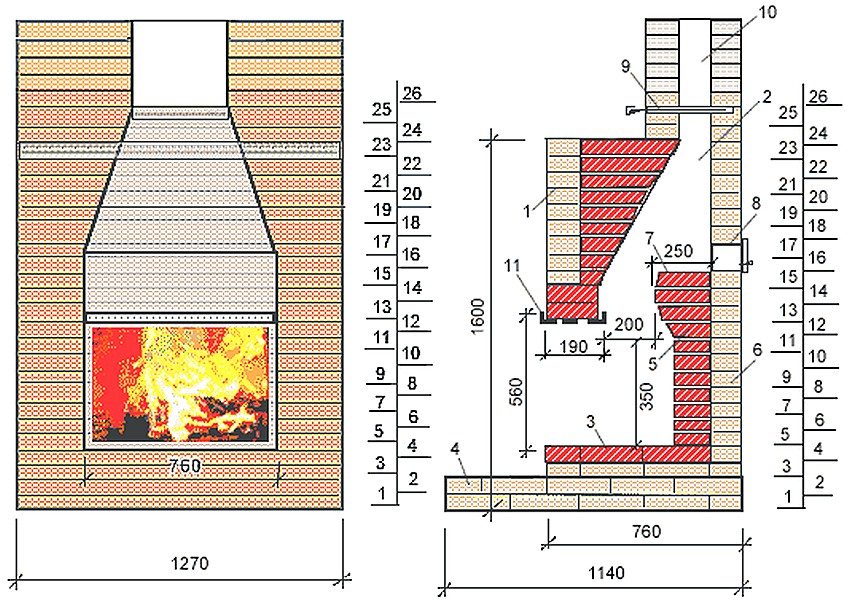
Scheme of an English fireplace with a direct chimney: 1 - fireplace portal (front wall); 2 - air circulation chamber (smoke collector); 3 - fireplace hearth; 4 - protective platform; 5 - refractory lining of the hearth; 6 - red solid brick; 7 - firebox jib; 8 - hole for cleaning; 9 - gate (damper); 10 - chimney; 11 - metal framing corners
Before starting work, it is worth deciding on the amount of building and finishing materials, as well as the design of the heating structure.
Helpful advice! The best option for self-construction is a wall-mounted fireplace. It can be erected in an already residential building, and this does not require violating the integrity of the main walls or making changes to the building plan. Another good solution would be to install a ready-made cast iron fireplace.
In the process of installing a fireplace with your own hands, you should not ignore step-by-step instructions, photo examples and professional advice, because they can significantly reduce construction time and help build a safe and functional heating device.
Advantages of wood-burning fireplaces for giving long burning
Recently, wood-burning fireplaces for summer cottages have become popular. Depending on the functions, a distinction is made between fireplace stoves for heating, cooking stoves and with a water circuit for heating. They may differ in material, purpose, size, power and shape.
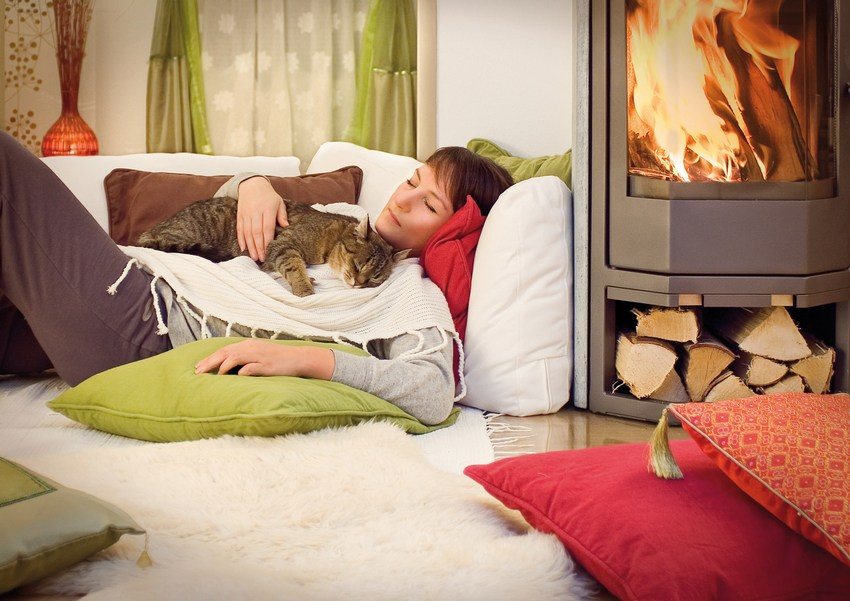
Long burning wood burning stoves are rapidly gaining popularity among summer cottage owners
Such devices are extremely aesthetic, practical and much more affordable than standard fireplaces. True, they also have a drawback that makes them related to the latter. Fireplace stoves can only be an auxiliary source of heat. They will not compete with either solid fuel or gas boilers. Another drawback is the significant fuel consumption, however, it is less than in the case of wood-burning stoves.
Fireplace stoves also have a number of undeniable advantages. They allow the owners of summer cottages not to depend on electricity (as is the case with an electric boiler), the timing of the supply to the section of gas communications. And although fireplace stoves serve only as an auxiliary heating device, they will become a real boon in the cold during gas interruptions: they will protect the house from the cold, the heating system from freezing, and the owners from unnecessary expenses.
Helpful advice! Firewood for fireplace stoves can be bought in the summer, during the period of lowest demand, which means that you can save a lot.
Stoves-fireplaces for a country house are easy to install and do not require specific knowledge and long-term approvals.They are inexpensive and will last for many years, heating the house and bringing aesthetic pleasure to its residents.
